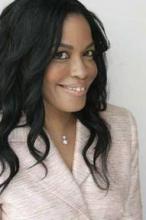ORLANDO – Generational dermatology can be conceptualized by looking at patients now in their 50s, 60s, and 70s and thinking about what aspects of aging could have been targeted 20 years ago had currently available tools been available then, according to Dr. Wendy E. Roberts.
“What interventions would we select for our patients, and what tools do we have that we did not have then?” said Dr. Roberts of Rancho Mirage, Calif.
One area for intervention that stands out is integumentary system collapse, with such features as stress tears, purpura, and photodamage, she said, noting that these aren’t things that happen overnight. Preventive measures, beginning with a focus on the skin barrier, can go a long way toward preventing this type of organ damage.
“Skin barrier has been upgraded to a major feature of a variety of common disease states, so I encourage everyone to start your therapeutic plan by assessing this skin care component – assessing the integrity of the skin,” she said, explaining that entities including xerosis, pruritus, purpura, and rosacea share a common factor: skin barrier abnormalities.
Understanding what is normal, what indicates injury, and what is considered progressive pathology with respect to skin barrier is important.
Consider xerosis, for example.
For a long time, the condition was relegated to “just dry skin.” But xerosis is the No. 1 aging skin issue for both men and women, she noted.
Further, it contributes to other important skin pathology, including pruritus, lichen simplex chronicus, and foot fissures.
“This happens because over the course of our lifetime, we have decreasing epidermal keratinocyte transit time,” she explained.
Of note, foot ulcers are a billion dollar burden on the American health care system, and a major contributing factor – accounting for about 70% of foot ulcers – is hyperkeratosis, she said, adding that “there’s something to be said about foot care and moisturization.”
“I always recommend this in my evolving aging patients. It’s something we really need to think about, and we can’t wait to think about it in the 7th decade,” she said referring to moisturization and good skin care habits.
Moisturization is the key, and it involves the use of protectants that produce an additional barrier to water loss, hydration with moisturizers that decrease transepidermal water loss and restore water to the epidermis, and emollients that intercalate and form a nice skin barrier. Using all three is advisable, as each has a specific function, she said.
Other pearls for xerosis management include a review of all possible contributors: photodamage, menopausal status, hormonal status, comorbidities, thyroid status, and emerging medication issues. Statins and systemic retinoids, in particular, can contribute.
Climate and living environment also should be considered, as cold (and use of heating units), high altitude, and desert areas can increase the risk of xerosis.
Advise patients with xerosis to avoid prolonged contact with hot water and with detergent cleansers (in lieu of moisturizing cleansers), and recommend twice daily application of cream- or oil-based vehicles rather than lotions. Supplements, including omega-3s, vitamin A, vitamin B, and primrose may also provide some benefit, she said.
Among the other tools that Dr. Roberts recommended for use earlier in life to help improve outcomes across the lifespan are imaging technologies and full-body skin exams.
Visual interactive systems that can bring patients awareness regarding the aging process, and imaging of pigmented lesions via dermoscopy that can help track changes over time are examples of imaging modalities that can be used. Programs exist that allow patients to log in to a program from home and view the images of their skin online.
Examples include Touch MD by Alphaeon, MelaFind by MELA Sciences, and Visia by Canfield Scientific which can be useful not only for cosmetic dermatology, but also for medical dermatology, she said.
“These tools aren’t just research tools; these tools really help communicate the attributes of all aspects of aging skin and can be very beneficial,” she said.
Such images can be useful in children as well, as they can show the early effects of photodamage and encourage parents to begin sun protection efforts early.
Full-body skin exams are a must, because the most deadly skin cancers occur most often on typically covered sites. Such exams also can be used as a tool to discuss medical, cosmetic, and oncologic issues that are important throughout the aging process, she said.
Dr. Roberts reported that she is a speaker or consultant for, and/or has received honoraria from Allergan, Colorescience, L’Oreal, La Roche-Posay, NeoStrata, SkinMedica, Theraplex, and Top MD Skincare.


